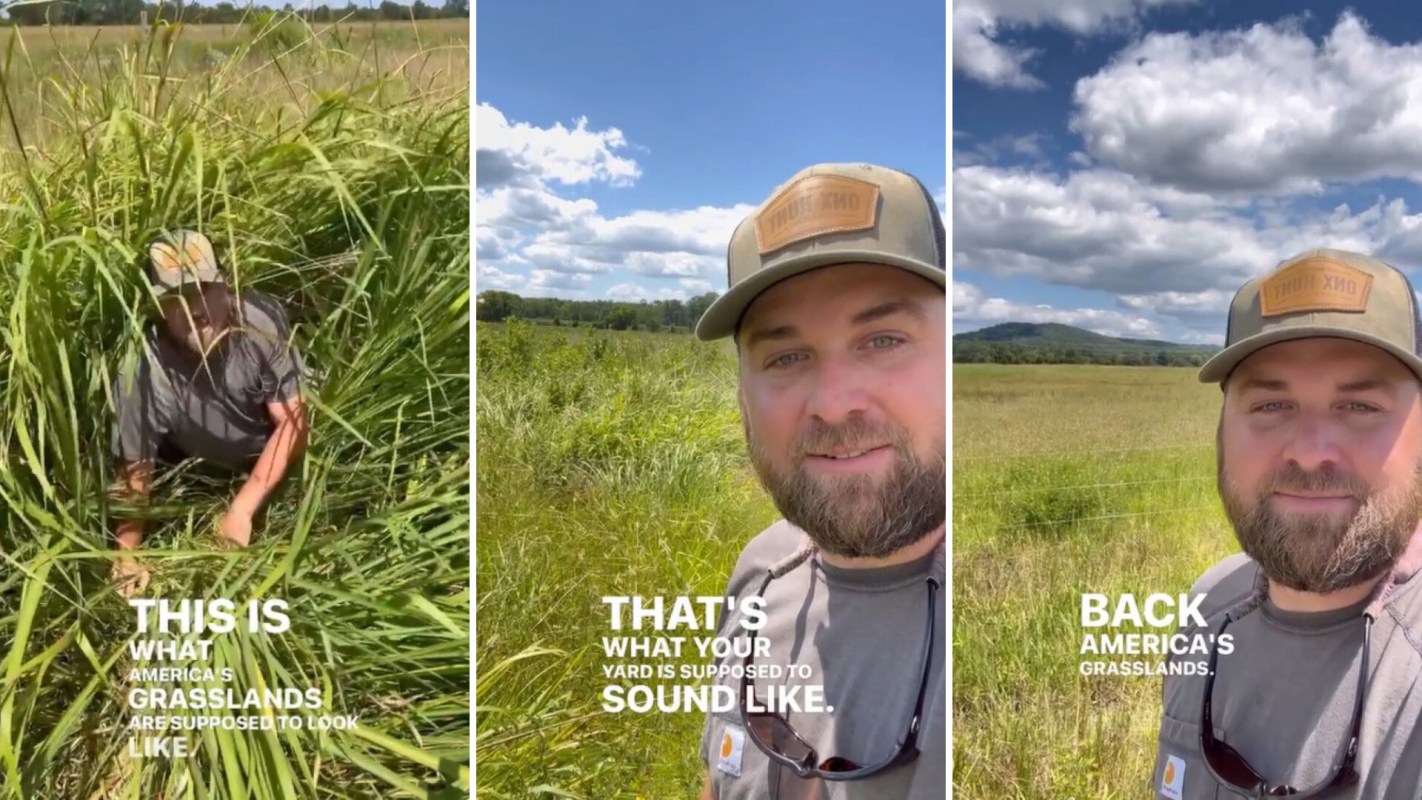One expert on social media just illustrated the dramatic difference between neglecting your lawn and restoring native prairie grasses — and why it's worthwhile.
Kyle Lybarger (@nativeplanttok) is an Alabama conservationist and a huge supporter of restoration and rewilding projects. However, as he points out in this video, "all grasses aren't created equal," and rewilding doesn't always just mean letting the weeds grow in.
@nativeplanttok All grasses aren't created equal!! There's a huge difference between our native prairie grasses and the non-native turf grasses we've replaced them with. #nativehabitatproject #ecosystems #wildlife #conservation #grasslands #nativewarmseasongrasses ♬ original sound - Kyle Lybarger
"This is what America's grasslands are supposed to look like," he says, crawling through a field of grass thick and tall enough to hide him from view when he goes on all fours. "This is what we need: Things like eastern gamagrass and greasy grass."
Sadly, that's very different from what's in most people's lawns. In another shot, he sits in a different field. It hasn't been mowed, but it's also a different, smaller species, and it does nothing to hide him from view.
"These are non-native pasture grasses, and they don't provide any cover for wildlife," Lybarger explains. "Seriously, this is way taller than most people's lawns, and how do we expect them to find cover in this? … This is what most people would get if they stopped mowing their lawns, just invasive plants going to seed, outcompeting native species."
Invasive species are ones that are transported to a new environment and begin to thrive without natural predators and competition.
They multiply and grow excessively, use up all the resources in the area, and crowd out or kill off other species, ruining the natural balance of an ecosystem. That can have serious consequences for the people who rely on that healthy ecosystem for food, resources, or their livelihood.
Meanwhile, native species are well adapted to the local environment, so they fit harmoniously with the species that are already there. Homeowners who plant native species don't have to provide much care or water because the plants already have the perfect growing conditions for their needs, saving owners money and time.
They can even help cool your home, as Lybarger pointed out in another video. Wildlife, including pollinators, can use them for food and shelter — and that benefits humans too, since pollinators are a keystone of our food production system.
"True conservation means getting these places back to what they're supposed to be," Lybarger says. That can include planting even a small patch of native grasses or switching to clover or buffalo grass.
Some commenters raised understandable barriers to going as big as the video proposes, such as one who wrote, "Unfortunately city ordinance says grass has to be kept at a certain length or you'll get fined."
Others, meanwhile, were quick to share their appreciation. "The soil surface temp must be sooo much cooler under those big grasses," one wrote, with Lybarger responding that it was "cool to the touch."
Another commenter helpfully added, "That kind of ground cover reduces the loss of hang water in the soil to evaporation, and is the best defense against desertification."
Join our free newsletter for easy tips to save more, waste less, and help yourself while helping the planet.









